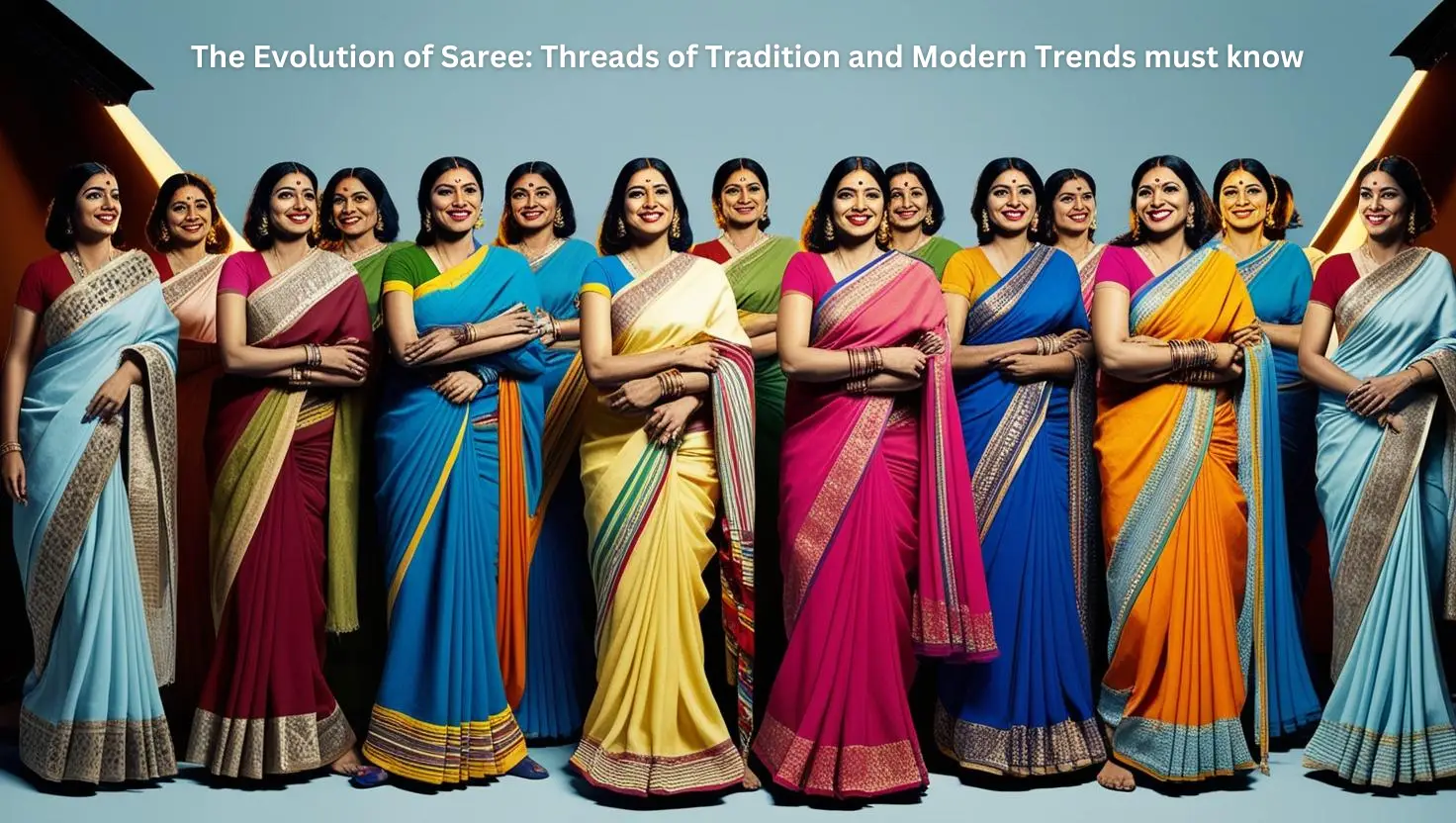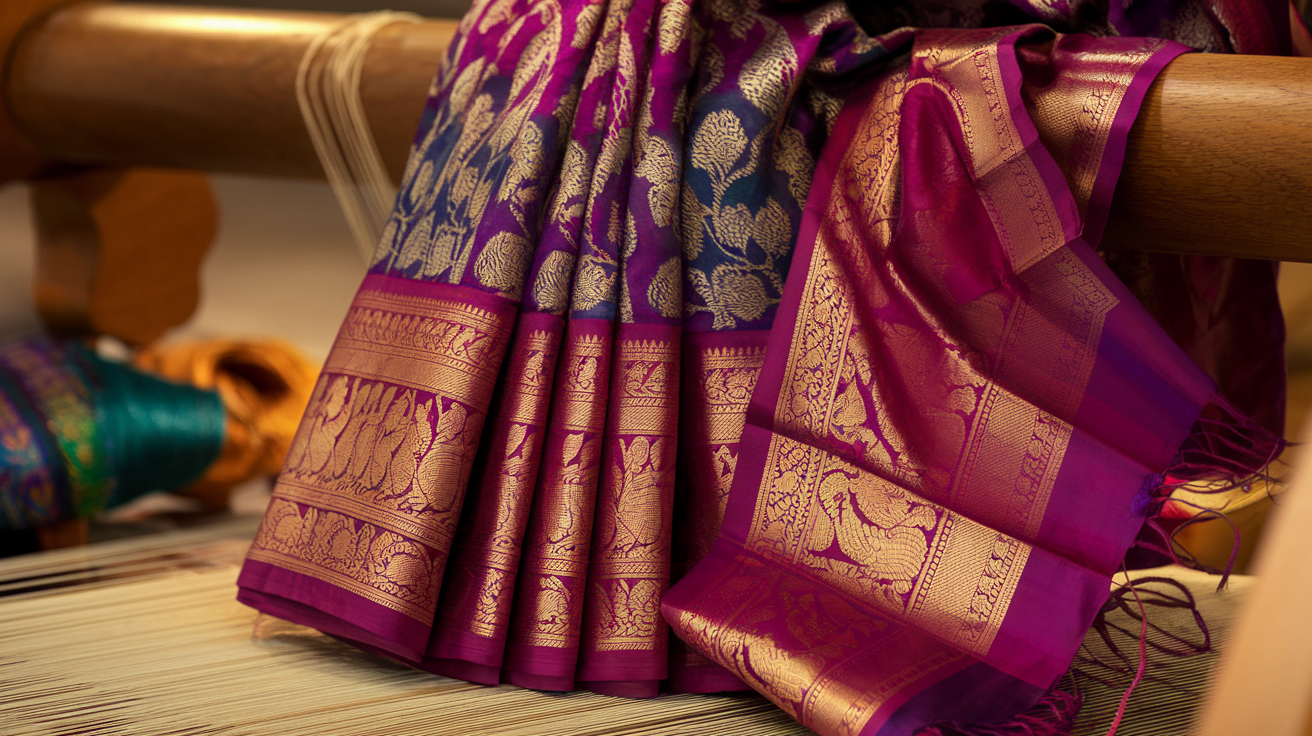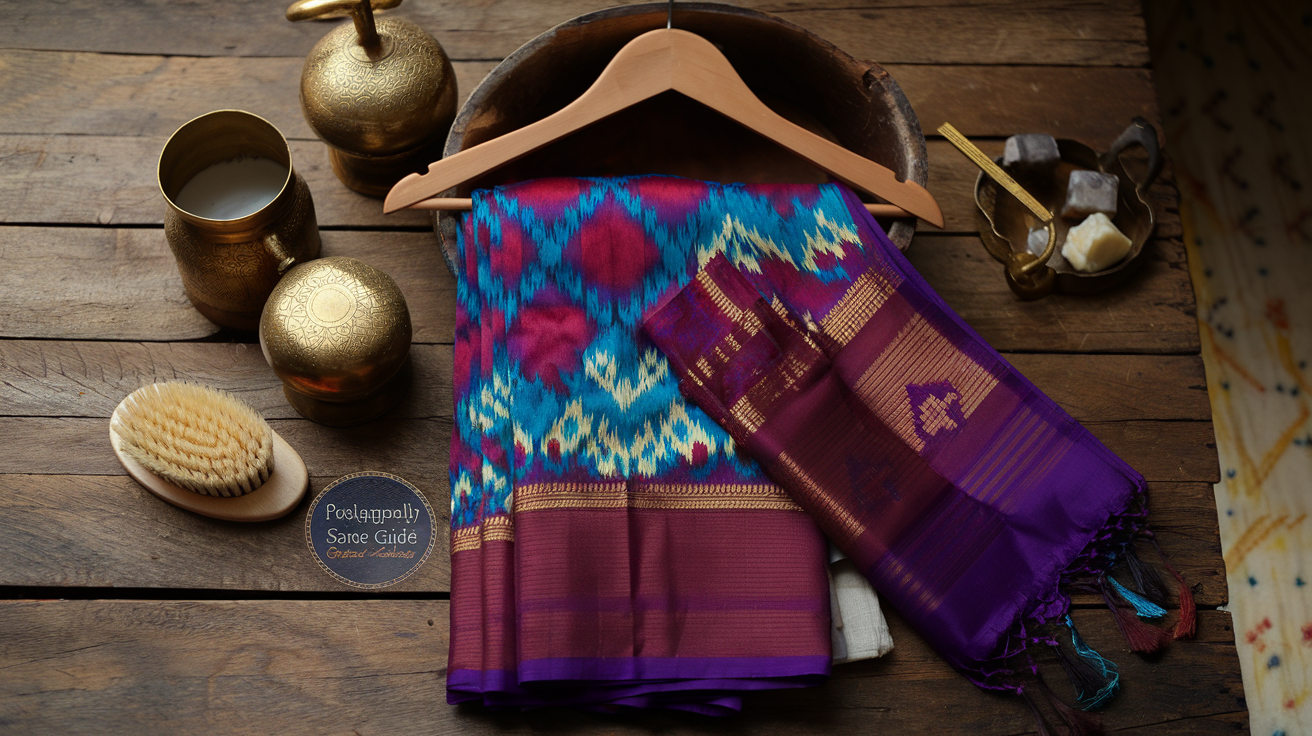Table of Contents
ToggleThe Evolution of Saree: Threads of Tradition and Modern Trends
1. The Origins and History of Sarees
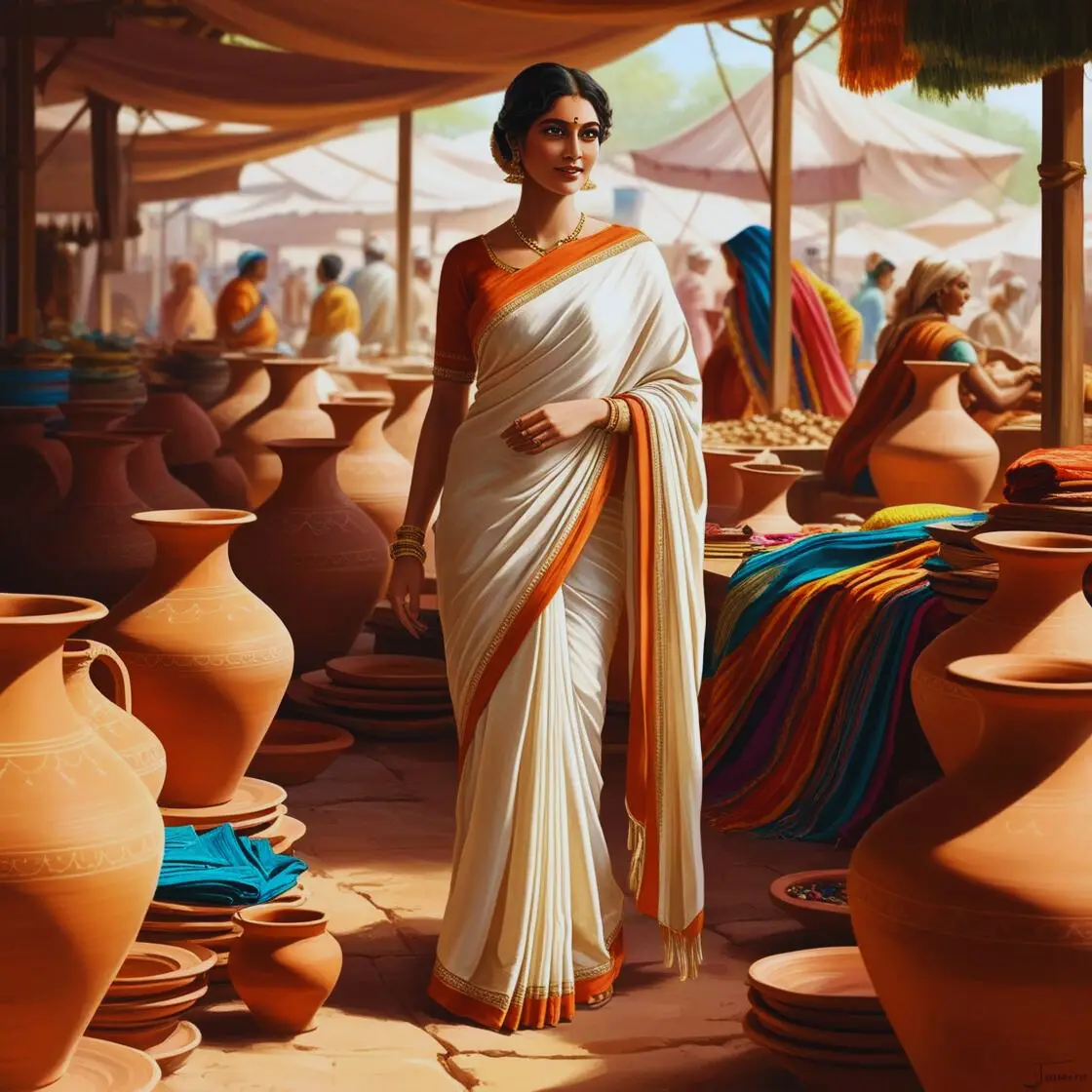
1.1. Ancient roots in the Indus Valley Civilization
The story of the saree begins in the cradle of ancient Indian civilization. Archaeologists have found evidence of woven cotton in the Indus Valley as far back as 3000 BCE. Isn’t it amazing to think that the saree’s ancestors might have been worn by our distant relatives thousands of years ago?
I remember visiting an exhibition on ancient Indian textiles, and it was fascinating to see how the basic concept of draping fabric hasn’t changed much over millennia. It really made me appreciate the timeless nature of this garment.
1.2. Saree Evolution through different historical periods
As India’s history unfolded, so did the saree. During the Maurya and Gupta periods (322 BCE – 550 CE), we see the emergence of more structured draping styles. The medieval period brought influences from Central Asia, introducing new fabrics and embellishments.
I often wonder how our ancestors felt when they first encountered silk from China or intricate embroideries from Persia. It must have been so exciting to incorporate these new elements into their traditional attire!
1.3. Regional variations and adaptations of Saree
One of the things I love most about sarees is how they reflect India’s diversity. From the bold prints of Rajasthan to the delicate weaves of Bengal, each region has its unique style.
I have a friend from Kerala who once showed me how to drape a traditional Kasavu saree. It was so different from the styles I was used to, and it made me realize how much there is to learn about this seemingly simple garment.
2. The Art of Saree Draping: Styles and Techniques
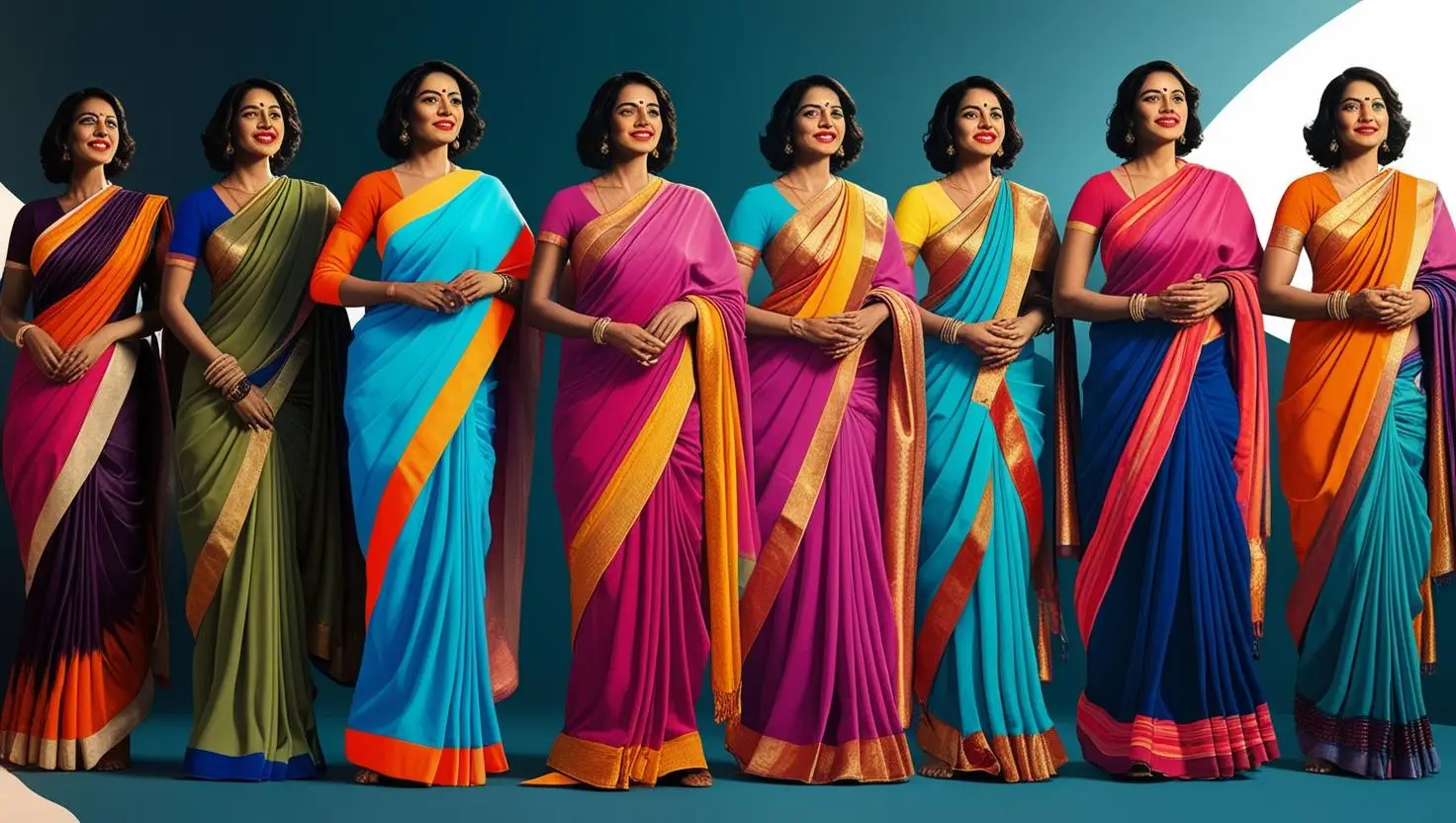
2.1. Traditional saree draping methods across India
Did you know there are over 100 documented ways to drape a saree? From the elegant Nivi style of Andhra Pradesh to the practical Coorgi style of Karnataka, each method tells a story about the lifestyle and culture of its origin.
I once attended a workshop on saree draping, and it was eye-opening to see how a simple change in pleating or tucking could completely transform the look and feel of the saree.
2.2. Modern innovations in saree wearing
Today, we’re seeing some really creative takes on saree draping. Designers and fashion enthusiasts are experimenting with pants-style sarees, jacket-style drapes, and even saree gowns.
I recently saw a YouTube tutorial on how to drape a saree as a cocktail dress, and I was amazed at how versatile this traditional garment can be!
2.3. The symbolism behind different saree draping styles
It’s fascinating how saree draping can convey so much. In some communities, the way a woman drapes her saree can indicate her marital status or the occasion she’s dressing for.
I remember attending a traditional South Indian wedding where the bride’s saree was draped in a specific style to symbolize her transition from a maiden to a married woman. It was such a beautiful and meaningful gesture.
3. Fabrics and Weaves: The Diversity of Sarees
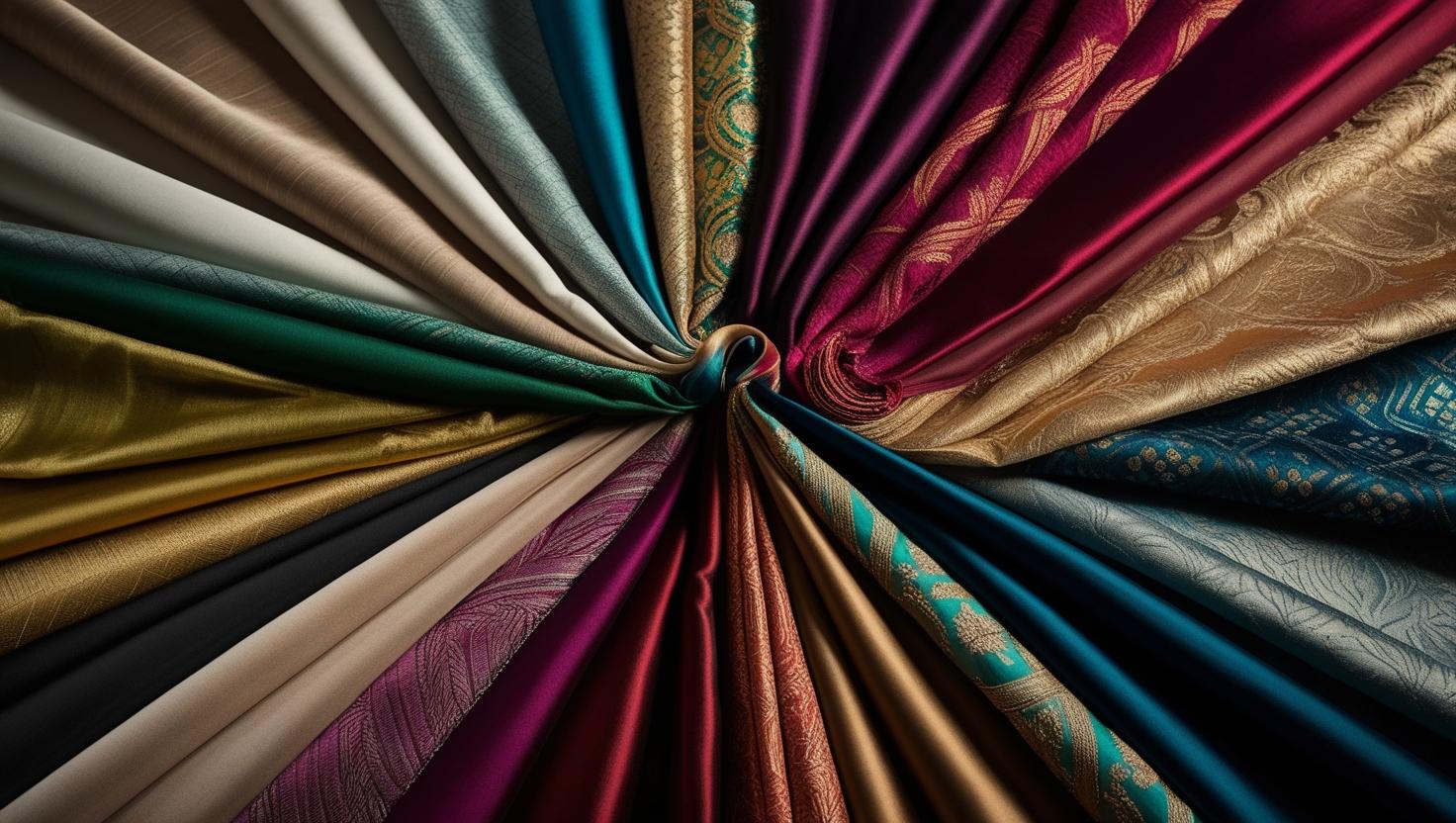
3.1. Silk sarees: From Banarasi to Kanjivaram
Silk sarees are often considered the crown jewels of Indian textiles. The shimmering Banarasi sarees from Varanasi and the rich Kanjivaram silks from Tamil Nadu are prized possessions in many Indian wardrobes.
I have a Banarasi silk saree that my grandmother passed down to me, and every time I wear it, I feel connected to her and to centuries of tradition.
3.2. Cotton sarees: Comfort and versatility
While silks are stunning, there’s something special about the humble cotton saree. Whether it’s a crisp Mangalagiri or a soft Bengal cotton, these sarees are perfect for everyday wear.
On hot summer days, nothing beats the comfort of a light cotton saree. I have a collection of block-printed cotton sarees that I reach for time and time again.
3.3. Emerging trends in saree fabrics
The saree world is not stuck in the past. We’re seeing exciting innovations like sarees made from recycled materials, organic fabrics, and even high-tech textiles that are wrinkle-free or have temperature-regulating properties.
I recently came across a brand that makes sarees from bamboo fiber. They’re incredibly soft and eco-friendly – it’s amazing how traditional garments can adapt to modern concerns.
4. Sarees in Popular Culture and Media
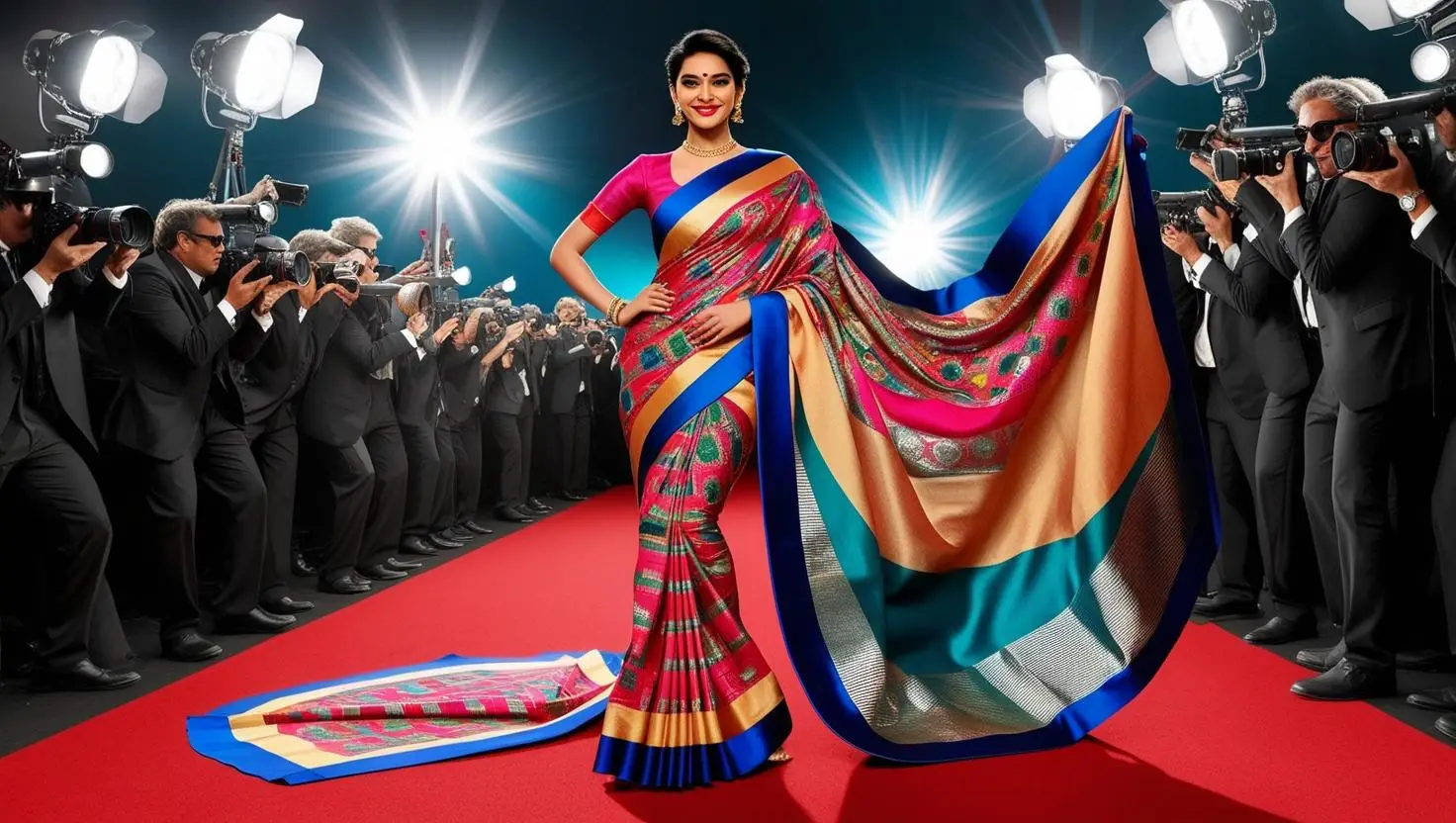
4.1. Bollywood’s influence on saree fashion
Bollywood has played a huge role in shaping saree trends. From Mumtaz’s iconic orange saree in “Brahmachari” to Deepika Padukone’s sequined numbers, movie stars have always influenced saree fashion.
I still remember trying to recreate Madhuri Dixit’s blue saree look from “Hum Aapke Hain Koun..!” for a college event. It didn’t quite turn out the same, but it was so much fun trying!
4.2. Sarees in literature and art
Sarees have inspired countless works of art and literature. From the vivid descriptions in Arundhati Roy’s “The God of Small Things” to Raja Ravi Varma’s paintings, the saree has been a muse for many creative minds.
Reading Chitra Banerjee Divakaruni’s “The Palace of Illusions” made me see the saree in a new light – as a symbol of femininity and power.
4.3. The global appeal of sarees in international fashion
It’s heartening to see sarees gaining recognition on global platforms. From runways in Paris to red carpets in Hollywood, the saree is making its mark.
I was thrilled when I saw Priyanka Chopra Jonas wearing a saree to the Met Gala. It felt like a proud moment for Indian fashion!
5. The Saree Industry: Craftsmanship and Economics
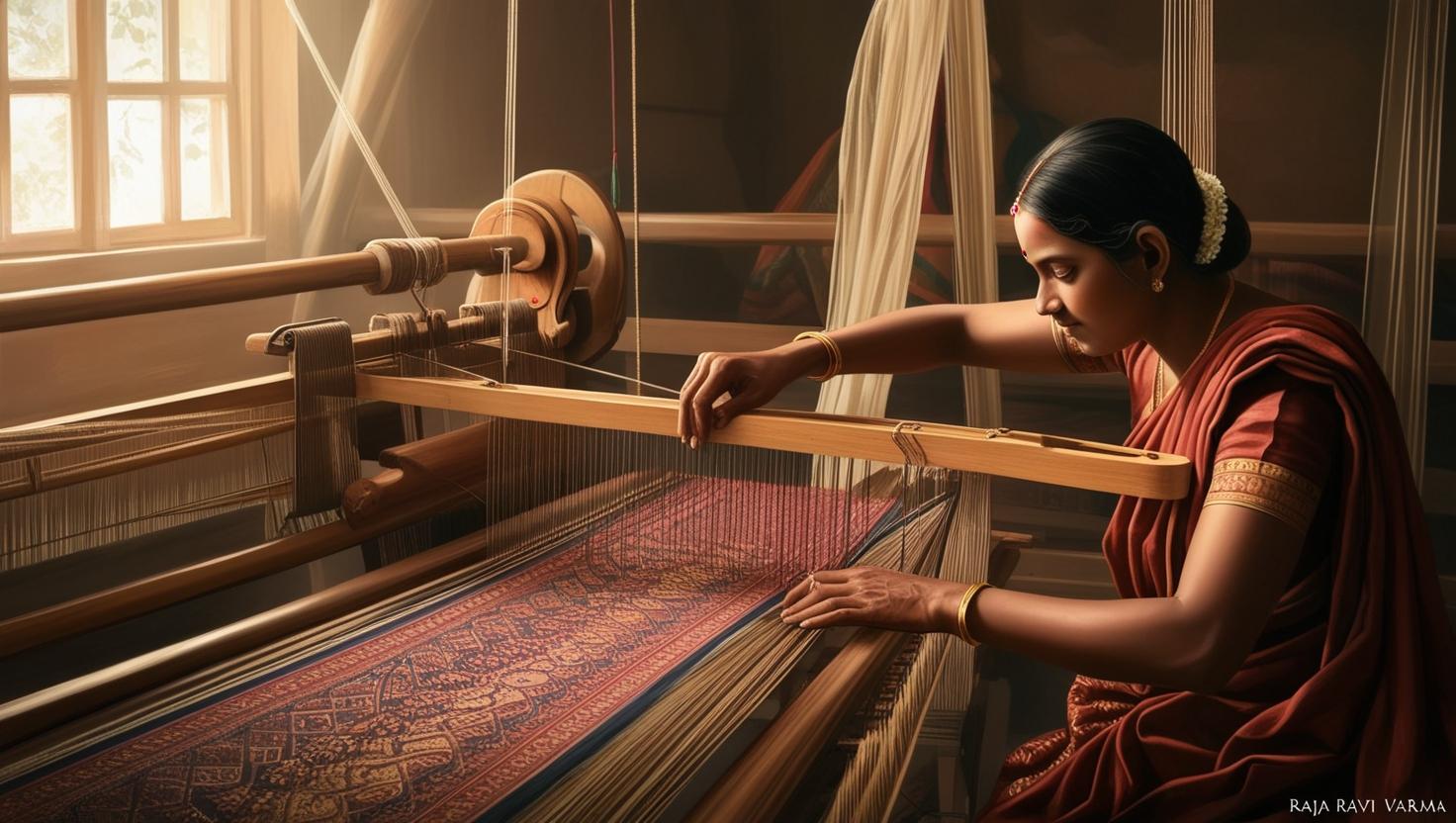
5.1. Traditional saree weaving communities and their challenges
Behind every beautiful saree is the skill and dedication of weavers. Many of these artisans come from families that have been in the trade for generations. However, they face numerous challenges in today’s fast-paced, machine-driven world.
I once visited a weaving village in Madhya Pradesh, and it was both inspiring and heartbreaking to see the incredible skill of the weavers and learn about their struggles to compete with mass-produced textiles.
5.2. The role of technology in saree production
While traditional techniques are irreplaceable, technology is playing an increasing role in saree production. Computer-aided design is helping create more intricate patterns, while modern looms are increasing efficiency.
It’s a bit of a double-edged sword, isn’t it? On one hand, technology can help preserve dying art forms, but on the other, it might take away from the handmade charm of sarees.
5.3. Sustainability and ethical considerations in saree manufacturing
There’s a growing awareness about the environmental and ethical aspects of fashion, and the saree industry is no exception. More brands are focusing on sustainable materials, fair trade practices, and ethical production methods.
I’ve started paying more attention to where my sarees come from and how they’re made. It feels good to support brands that care about their environmental impact and treat their workers fairly.
6. Sarees in the Modern Wardrobe
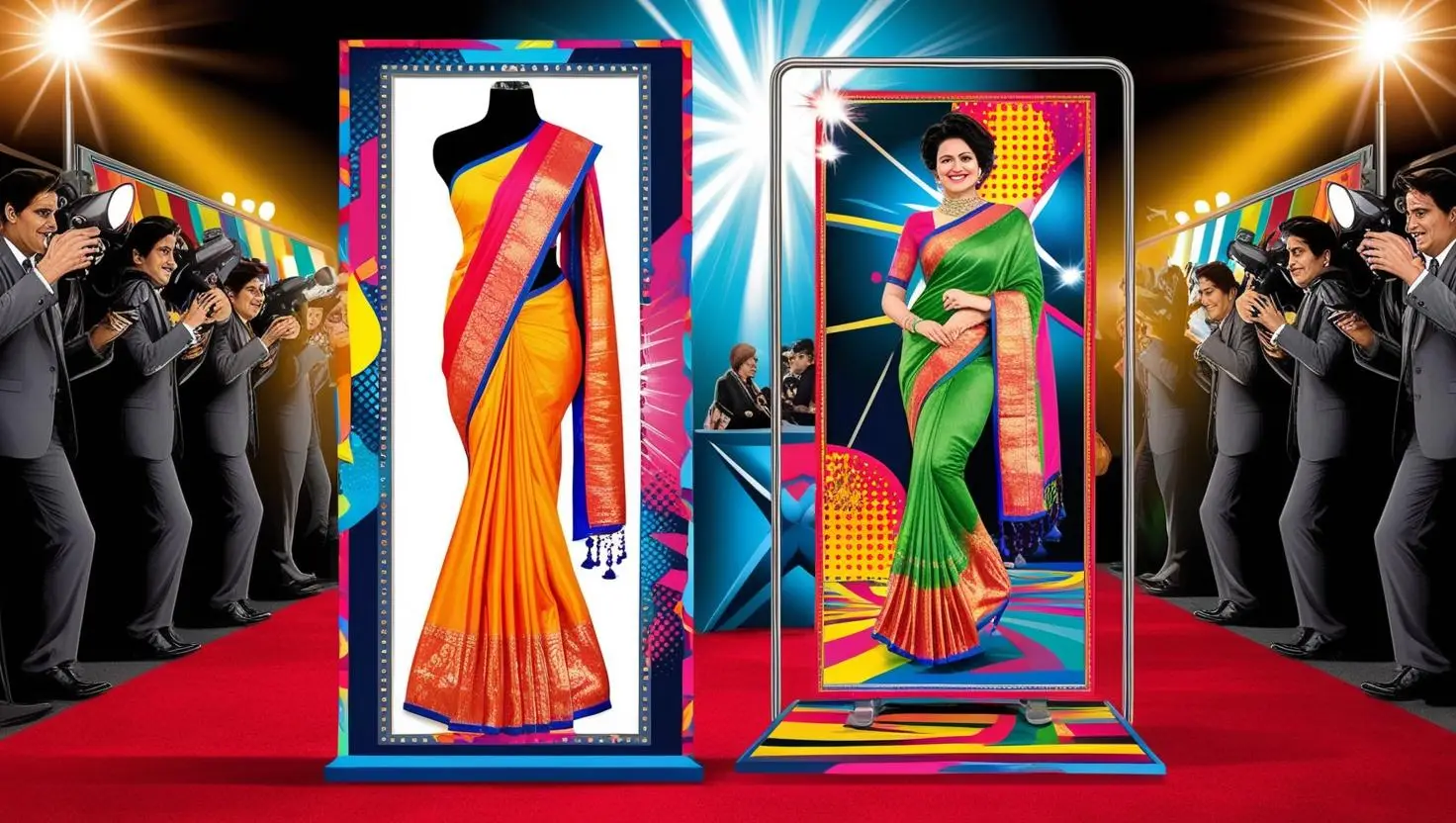
6.1. Fusion styles: Blending tradition with contemporary fashion
The modern saree isn’t confined to traditional styles. Designers are creating exciting fusion pieces that combine the grace of sarees with contemporary silhouettes.
I recently wore a saree-inspired jumpsuit to a friend’s wedding, and it was a hit! It had all the elegance of a saree but was so much easier to manage.
6.2. Sarees for different occasions: From daily wear to bridal
One of the best things about sarees is how versatile they are. You can wear a simple cotton saree to work, a fancy silk one to a party, and of course, there’s nothing quite like a bridal saree.
I have sarees for all occasions in my wardrobe. My favorite is a lightweight linen saree that I can throw on for a quick grocery run or dress up for a casual dinner.
6.3. Accessories and blouse designs complementing sarees
The right accessories and blouse can completely transform a saree. From traditional kundan jewelry to modern statement pieces, from classic short-sleeved blouses to trendy off-shoulder designs, the possibilities are endless.
I love experimenting with different blouse styles. Recently, I paired a simple black saree with a quirky printed blouse, and it turned out to be such a fun, eye-catching combination!
Summary
The saree is more than just a piece of clothing; it’s a symbol of India’s rich cultural heritage, a canvas for artistic expression, and a versatile garment that continues to evolve with time. From its ancient roots to its modern avatars, the saree has remained a constant in Indian fashion, adapting to changing tastes while retaining its timeless elegance.
As we’ve explored in this journey, the world of sarees is vast and varied. It encompasses everything from the intricate craftsmanship of traditional weaves to the innovation of modern designs, from the challenges faced by weaving communities to the global recognition of this iconic garment.
Whether you’re a saree enthusiast or someone curious about this unique aspect of Indian culture, I hope this exploration has given you a deeper appreciation for the saree. Who knows? Maybe it’ll inspire you to drape one yourself or learn more about the rich tapestry of stories woven into each saree.
FAQs
What is the standard length of a saree?
The standard length of a saree is typically between 5.5 to 6 yards (about 5 to 5.5 meters). However, some regional variations may be longer or shorter.
How many types of sarees are there in India?
There are hundreds of types of sarees in India, each associated with different regions, weaving techniques, and materials. Some popular types include Banarasi, Kanjivaram, Chanderi, Paithani, and Bandhani, among many others.
Can sarees be worn in Western countries?
Absolutely! Sarees can be worn anywhere in the world. Many people of Indian origin living abroad wear sarees for special occasions, and the garment is gaining popularity among non-Indians as well.
How do you care for and maintain a saree?
The care for a saree depends on its fabric and embellishments. Generally, delicate sarees should be dry cleaned, while cotton sarees can be hand washed. Always store sarees in a cool, dry place, and refold them periodically to prevent creasing.
Are there any alternatives to traditional sarees for those who find them difficult to wear?
Yes, there are many alternatives for those who find traditional sarees challenging. Pre-stitched sarees, saree gowns, and Indo-western fusion wear offer the look of a saree with easier wear and management.

